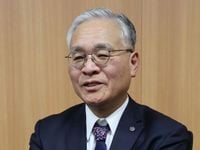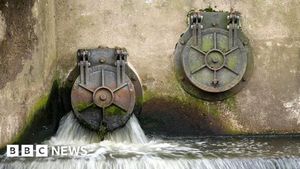In a significant shift in educational policy, the Japanese government is set to implement changes to the high school tuition exemption system starting in 2025. This reform aims to alleviate the financial burden on families, particularly those with lower incomes.
Currently, households earning less than 9.1 million yen annually receive a tuition support of 118,800 yen for public and private high schools. For private institutions, families with an income below 5.9 million yen can receive up to 396,000 yen in support. However, starting in April 2025, these income limits will be abolished, and public high school tuition will become completely free.
Private high schools will also see substantial changes; beginning in 2026, the government plans to increase the maximum support amount from 396,000 yen to 457,000 yen while also removing the income restrictions. This move is expected to broaden access to educational opportunities for students across the nation.
According to the Ministry of Education, Culture, Sports, Science and Technology's 'FY2023 Survey on Children's Learning Costs,' the average costs of attending public high schools, excluding tuition, are approximately 300,000 yen per year. This figure encompasses various expenses such as entrance fees (7,398 yen), school trip costs (29,680 yen), textbook expenses (37,507 yen), school supplies (24,785 yen), and other fees associated with extracurricular activities and commuting.
For private high schools, the average annual education costs, excluding tuition, amount to around 530,000 yen. This includes similar fees as public schools but with higher overall costs, reflecting the additional financial burden families may face.
Despite the financial support, families must remain aware that not all tuition costs will be covered. For instance, if a private school charges tuition exceeding the support limit of 457,000 yen, parents will need to cover the difference. Currently, some private institutions charge tuition fees of 600,000 yen or more, which could still leave families with significant out-of-pocket expenses.
As the reforms take effect, the government anticipates that the changes will enhance educational choices for families. The removal of income restrictions is expected to encourage more students to consider private schools, which often offer different educational environments and opportunities compared to public schools. This could lead to a more diverse educational landscape as families weigh their options.
Kohei Sasai, president of the Kyoto Prefectural Private Junior and Senior High School Association, expressed optimism about the government's initiative. He noted that increasing educational choices for families is a positive step for private schools, which can enhance their offerings and attract more students. He stated, "The expansion of options at the time of high school entrance is a good opportunity for private schools to reflect their educational philosophies and improve their learning environments."
However, there are concerns regarding the implementation of tuition-free policies, particularly in relation to the cap system in Osaka Prefecture, which sets a maximum limit on public funding for tuition. The Kyoto Prefectural Private Junior and Senior High School Association has voiced opposition to this cap, arguing that it could undermine the financial viability of private schools and limit their ability to provide quality education.
The upcoming changes to the tuition exemption system have prompted discussions among educators, policymakers, and families. As the 2025 academic year approaches, many are eager to see how these reforms will unfold and what impact they will have on the educational landscape in Japan.
In conclusion, the government's initiative to make high school tuition free marks a significant step toward reducing educational costs for families. With the removal of income restrictions and increased support for private schools, the reforms are set to broaden educational access and opportunities for students across the nation.






